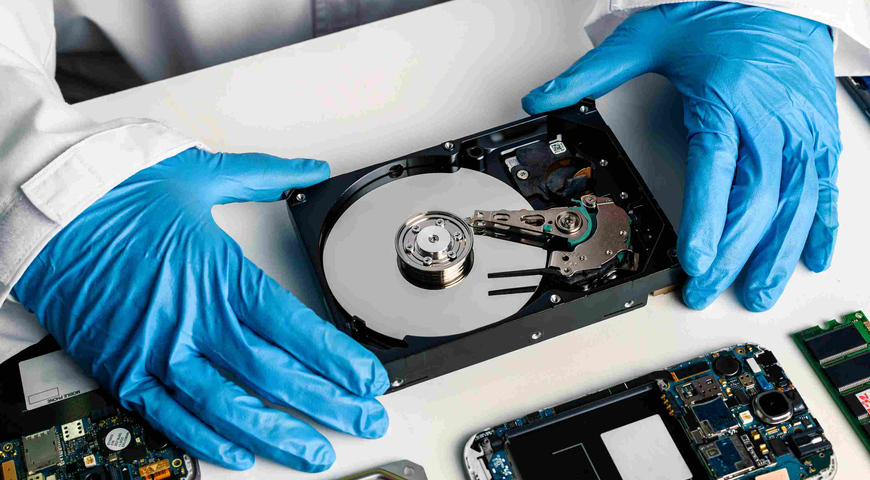
It’s difficult to predict what kind of impact artificial intelligence (AI) will ultimately have on the world and on managed service providers (MSPs) in particular. But emerging from a fog of anxiety, promise and fear surrounding AI are new developments that MSPs can put to use both now and in the future.
AI is set to become a driver of remote monitoring and management (RMM), which enabled MSPs to revolutionize their business models and remodel themselves as true service providers rather than just break-fix repair shops. While even casual observers know about generative AI and platforms such as ChatGPT, other forms of AI will ultimately revolutionize RMM and bring MSPs to a new stage in their evolution. Some types of AI function now within RMM solutions, while others are still emerging.
MSPs have adopted AI carefully and deliberately up to this point, but advances in AI will ultimately help MSPs make the maturity journey from MSP 2.0 to MSP 3.0. The more advanced stage is characterized by proactive, rather than reactive client service. AI will become more critical in RMM in the years to come, and it’s already having some impact now. MSPs need to know how they can benefit from using AI today and plan to use it in the future on their journey to MSP 3.0.
The AI journey to MSP 3.0
MSP 3.0 is the next step in an MSP evolution that has taken shape over the course of decades but is now advancing rapidly:
- MSP 1.0: MSPs responded to client problems and requests, generally by showing up on-site and fixing the issue. Networking and servers as well as endpoints were major areas of focus, but MSPs had to make house calls to clients. Their service was useful, but the model was expensive and time consuming.
- MSP 2.0: MSPs responded to clients remotely and served multiple clients at once without having to visit client sites. RMM enabled MSPs to save time and money, and shift to a more proactive service model. But while RMM was revolutionary, it couldn’t yet “think” for itself, or learn to identify and resolve problems before they happened. MSP technicians performed those tasks using RMM.
- MSP 3.0: MSPs can offer predictive and cybersecurity-first services without having to do any extra work. AI-infused RMM can find and resolve issues for them. As such, MSPs can deliver a broader set of services, helping clients with compliance, cybersecurity, data protection, patch management and other key elements of a comprehensive service offering. The journey to MSP 3.0 will continue as AI develops and MSPs adopt the RMM solutions it drives.
Ultimately, embracing AI will not be optional for MSPs. Analyst firm Canalys notes that MSPs that can’t help clients understand the return on investment (ROI) of AI are likely to lose business opportunities.
Different types of AI are converging
ChatGPT and other generative AI platforms have grabbed most of the headlines so far, but other fields of AI are emerging and converging. Gartner notes that one of the leading trends in AI for IT is composite AI, which is actually a combination of three AI fields: knowledge graphs, machine learning and natural language processing.
Knowledge graphs capture information in a format that’s easy to visualize, but they can also depict complex relationships. Essentially, knowledge graphs deliver dependable logic and understandable reasoning in a way generative AI, which can sometimes “hallucinate” and fail on both fronts, generally can’t.
Natural language processing enables machines to understand and respond to human language. It’s at the foundation of generative AI applications such as ChatGPT. Machine learning is a broad field, but it involves humans teaching machines to perform repetitive processes.
Put them together and composite AI emerges. The breakthrough is that multiple forms of AI working together are more powerful, accurate and reliable than single forms of AI working alone. For example, natural language processing is less likely to produce errors if it is combined with the relative reliability of knowledge graphs.
As Gartner notes, composite AI enables “more accurate predictions, decisions and automations” than singular forms of AI. It’s faster, more powerful and more reliable than its individual parts. Composite AI is emerging to add speed and reliability to RMM solutions, reducing the need for technician intervention to resolve issues.
Agentic AI adds a proactive element
Another emerging form of AI has the potential to revolutionize MSP operations. As its name suggests, agentic AI enables MSPs to establish virtual “agents” that can recognize and resolve issues proactively and without MSP intervention.
Generative AI is strictly reactive to user input and responds to prompts but does not act autonomously. Agentic AI refers to systems that can autonomously make decisions and take actions to achieve complex goals with minimal or no human supervision. The autonomous nature of agentic AI sets it apart from generative AI, but the agentic model shares a major advantage with composite AI: It’s much less likely to “hallucinate,” according to Harvard Business Review (HBR).
Just as RMM enabled MSPs to move from an in-person, break-fix model to more efficient and efficient remote management of client systems, agentic AI infused in RMM will empower MSPs to get more done with fewer resources. It will also drastically improve client protection by making it proactive rather than reactive.
Agentic AI lets MSPs shift from classic automation to AI-powered automation. Classic rule-based, or scripted automation uses a set of predefined rules and scripts to handle repetitive tasks.
Automation powered largely by agentic AI, on the other hand, uses AI and machine learning to handle more complex and dynamic tasks. It can predict and address issues before they become problems, optimize resource usage and provide insights and recommendations based on data analysis. Agentic AI enables proactive cybersecurity and threat detection, and automates ticketing systems and service desk functions.
What can MSPs accomplish with the help of AI?
MSPs can already take advantage of some elements in AI present in RMM solutions. For instance, AI-based scripting in RMM solutions generates and edits administrative scripts in seconds for remote endpoint management, automating what has traditionally been a time-consuming and error-prone task for technician.
In the latest release of Acronis RMM, two new AI-based features are included:
AI-based patch stability scoring
This capability lets you reduce patching risks and protect uptime with AI-driven insights. It uses AI-generated risk scores, based on real-world incident reports from a global community of IT professionals, to assess patch stability before deployment. You can avoid client disruptions by flagging unstable patches for testing or delay and automatically detect emerging issues through open-source intelligence. This feature enables you to replace time-consuming manual checks with real-time, AI-guided decisions.
Acronis Copilot for software deployment setup
With this functionality, Acronis Copilot, an assistant based on generative AI, enables you to simplify complex software rollouts with AI-powered automation. Copilot instantly generates install and uninstall commands, return codes and package metadata — eliminating guesswork and manual configuration errors. You can simplify software onboarding with one-click readiness while reducing technician workload.
But even with those advancements, the combination of AI and RMM is still in its infancy. MSPs that want to be on the forefront of client service and efficient operations need to understand how they can benefit from emerging AI capabilities as they become available.
As it emerges, the combination of AI and RMM will open a wide set of new capabilities for MSPs on the path to MSP 3.0, including:
- Automation at scale: AI will enable MSPs to automate complex workflows end to end, including IT operations, supply chain management and customer support. MSPs will be able to reduce manual intervention and operational costs while increasing quality of client service.
- Service differentiation: MSPs can already differentiate their services by improving client service using capabilities such as AI-based scripting. As they continue to develop, composite and agentic AI will enable forward-looking MSPs to offer automated services that are faster and more reliable.
- Digital labor transformation: MSPs can already get more done easily and effectively with less human intervention using AI. That capability will only grow stronger as the connections between AI and RMM emerge and deepen. Hiring expertise to run clients systems will cease to be a major issue, and technicians will increasingly be able to focus on tasks other than responding reactively to client issues.
- Risk and governance: With the fusion of emerging AI and RMM comes increased ability for MSPs to deliver oversight, risk management and compliance — areas where service providers can expand much-needed services for clients.
It’s not too early to start thinking about AI and RMM
It’s true that AI as driving element of RMM is still an emerging concept that will evolve in the years to come. But MSPs need to know now where AI can take them both today and in the future.
AI is evolving rapidly. Just a few years ago, generative AI spouted mostly gibberish in response to prompts. ChatGPT and a new set of platforms put an end to that and ushered in an era of a highly capable version of AI that has become indispensable in many fields. Agentic and composite AI will also develop quickly and become essential to MSPs.
Acronis RMM already embraces AI with automated scripting, among other capabilities. MSPs can be confident that the solution will continue to be on the forefront of the combination of AI and RMM.
About Acronis
A Swiss company founded in Singapore in 2003, Acronis has 15 offices worldwide and employees in 50+ countries. Acronis Cyber Protect Cloud is available in 26 languages in 150 countries and is used by over 21,000 service providers to protect over 750,000 businesses.




